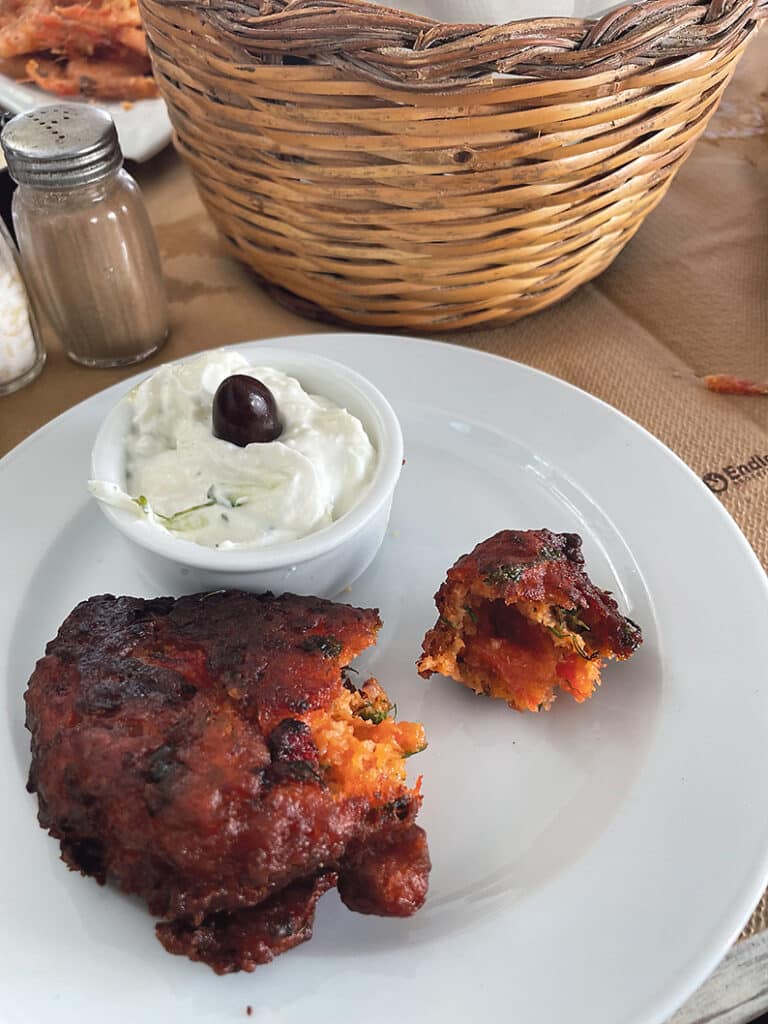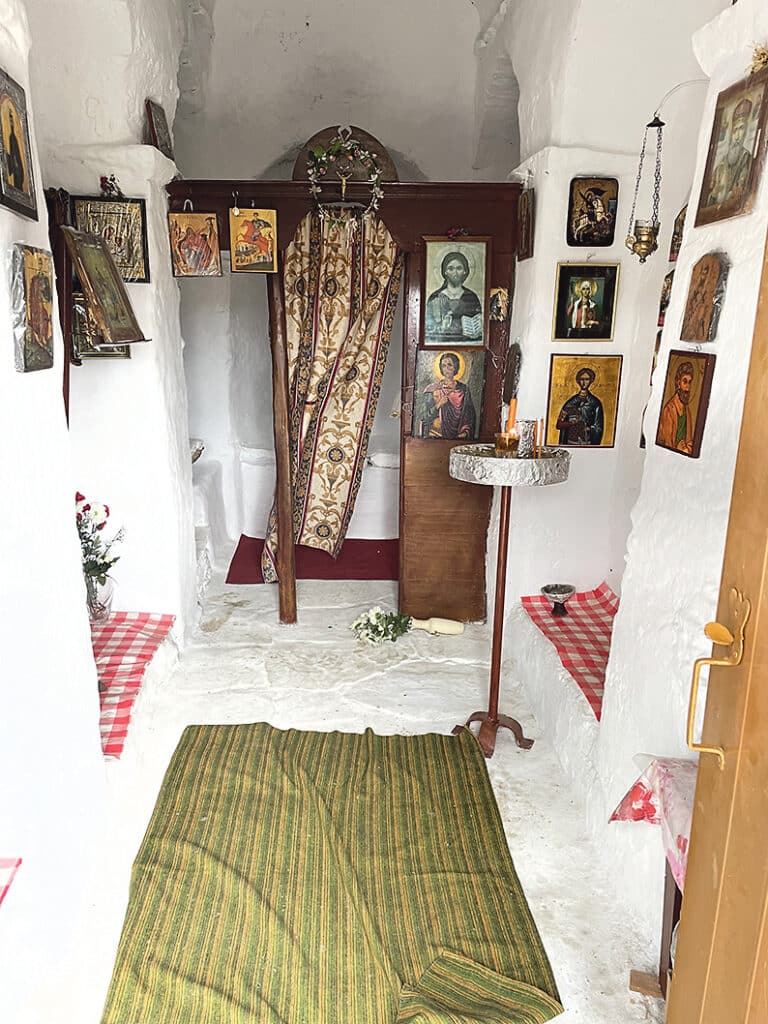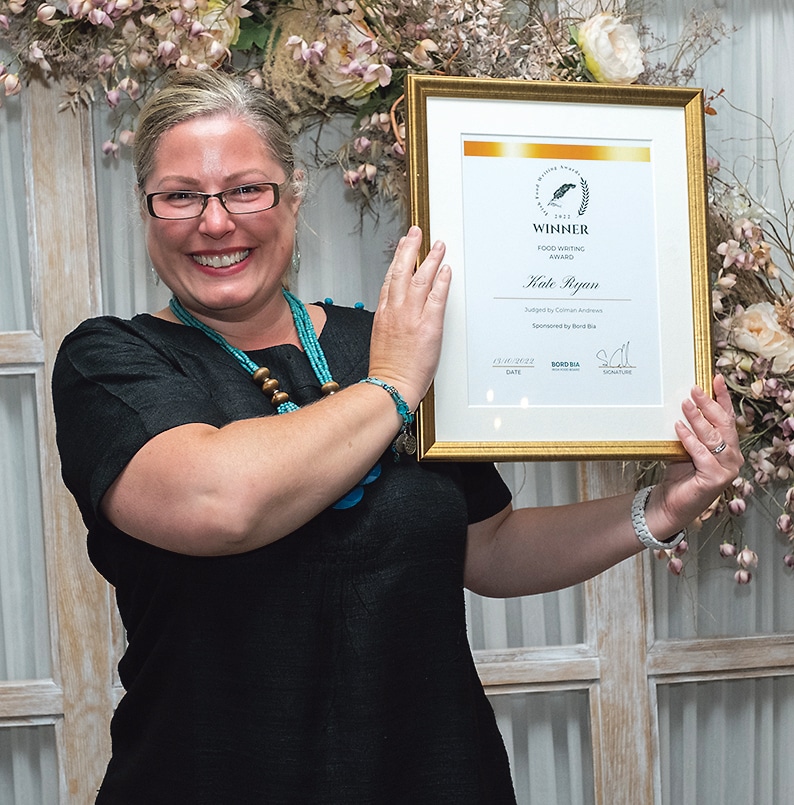We arrived into Amorgas, the third of the Cycladic islands that we have visited on this trip, late last night. We kind of ended up here by default after the ferries were cancelled due to extreme wind. This turnaround of our plans had the man in the ferry ticket bemused. “Amorgos” he said when we asked for two tickets. “Are you sure?”, “Why?” At which point we asked if there was something wrong with Amorgos. “It’s so far away” said the ticket man who had never been here…and it was. Six-and-a-half hours bumping through the sea in a small ferry boat but now that we’re here we glad we made the trip.
We did wonder last night when we landed. It was super windy, howling, but otherwise very quiet. We woke up this morning with the wind still whipping through the narrow streets but it cleared the clouds to reveal a blue sky.
Amorgos is quite a big island but sparsely populated. There’s one main road that seems to traverse the central spine of the island with side roads that switch backwards and forwards down to the sea on either side. It’s very steep and there are lots of steps. Steps up into the towns, steps down to the coast and lots of rough donkey paths when the steps peter out.
Steps are something most of the Cycladic islands seem to have in common, along with lots of very small churches and bakeries that make great pies. ‘Pies’ is quite a loose term, as they come in all shapes and sizes, savoury and sweet. Perfect for a picnic. We pick one up before we head for the hills. They get tucked into our backpacks along with half of our wardrobe, as you never know what you might need – jumper, sleeveless fleece and raincoat, which is for wind protection, not rain. We also throw in our togs and a towel in case we find a beach that we can clamber down to. The sea is pristine, pretty cool, but still delightful if the sun is shining.
The churches are scattered about the islands, often on top of the highest thing in sight or in the middle of nowhere. They are immaculately maintained, painted pristine white and blue. Some are unlocked and when we peep inside there are candles burning and beautiful pictures and icons.
Today we came across a monastery that was built high up, hugging the cliffs. It was up several hundred steps and was manned by two monks, two volunteers and lots of cats. We were invited in, up lots of steps, to an amazing church overlooking the sea, which looks out to a sheer drop below. It would be a great location for the next Star Wars movie.
Apart from the aforementioned steps, pies and mini churches, each island has its own distinct personality. We’ve been having great fun exploring and getting spectacularly lost. The signposts are erratic and all in Greek, which brings a new level of meaning to the phrase ‘it all sounds Greek to me’. It’s made me make a note to myself to learn the Greek alphabet. Wherever we go we make a point of learning how to say good morning, good evening, please and thank you. Counting is also an asset but there isn’t usually a problem with the alphabet.
The islanders are very proud of their food, most of the ingredients used are local or from neighbouring islands. There’s the bounty from the sea and the land with plenty of goats and sheep to produce the masses of cheese that are on offer.
The menus in the tavernas are quite simple and comprise of mezze, salads, grilled meats (goat, lamb and rabbits) and fish.
Mezze are made for sharing and mopping up with fresh bread. Aubergine, tzatziki, taramasalata, fava, hummus, beans and so on, and then there are plenty of fritters – courgette fritters, fish fritters, cheese fritters and tomato fritters.
Here’s a recipe for tomato fritters. The island of Santorini seems to lay claim to this origin of this particular recipe but there are many variations.
Our Greek friend Elisa reckons the fritters are best made with a mature Graviera, which she says is similar to mature Gruyere but most of the tavernas here use feta, which is also much more accessible in Ireland so I’m using that too (sorry Elisa). They include lots of fresh herbs and are delicious served with tzatziki on the side.
These fritters come in all shapes and sizes, anything from a small golf ball to a tennis ball and they are very difficult to photograph so please excuse the dodgy photo. It’s a tennis ball sized fritter – eaten in the daylight on one of the days when we went off exploring without any pies!
Use the ripest meatiest tomatoes that you can find.
Tomatokertedes – Greek Tomato Fritters
Ingredients:
• 4-5 ripe tomatoes – about 450g
• 1-2 red onions
• 2-3 spring onions
• 1tbs chopped mint
• 1tsp dried oregano
• 2tsp chopped fresh thyme
• 1 egg
• 120g crumbled feta
• 120g flour
• 1 tsp baking powder
• oil to fry
Method:
Cut the tomatoes in half and discard the seeds. Dice the flesh into small pieces, season with a little salt then put into a sieve over a bowl for 10-15 minutes. This will get rid of excess juices.
Peel and finely dice the onions, then stir into the tomatoes. The tomato juice will soften the onion.
Put all the tomato/onion mix into a bowl together with the chopped herbs, crumbled feta and egg. Season with salt and pepper. Take it easy with salt as feta is already quite salty. Mix everything together.
Combine the flour and baking powder then begin to add to the tomato mix. You may not need it all, it depends on how wet your mix is. You are looking for a thick batter that will hold its shape in the pan. If it’s too wet, add more flour.
Put a frying pan on the heat and add enough oil to just cover the bottom.
When the oil is hot, not burning, add spoonfuls of the batter and encourage into a tidy shape. Cook on a medium heat for 2-3 minutes then flip the fritter and cook the otherside. Lift out onto a piece of kitchen paper to drain before putting onto a serving plate.
Serve with a little tzatziki, Greek yoghurt or mayonnaise on the side.
I’ll be home by the time you read this!
I’m looking forward to giving classes again. I haven’t given a class since before Covid but I’m hoping it’ll be like riding a bike!
Island greetings,
Karen
Lettercollum Kitchen Project,
Timoleague
info@lettercollum.ie
www.lettercollum.ie
023 8846251





